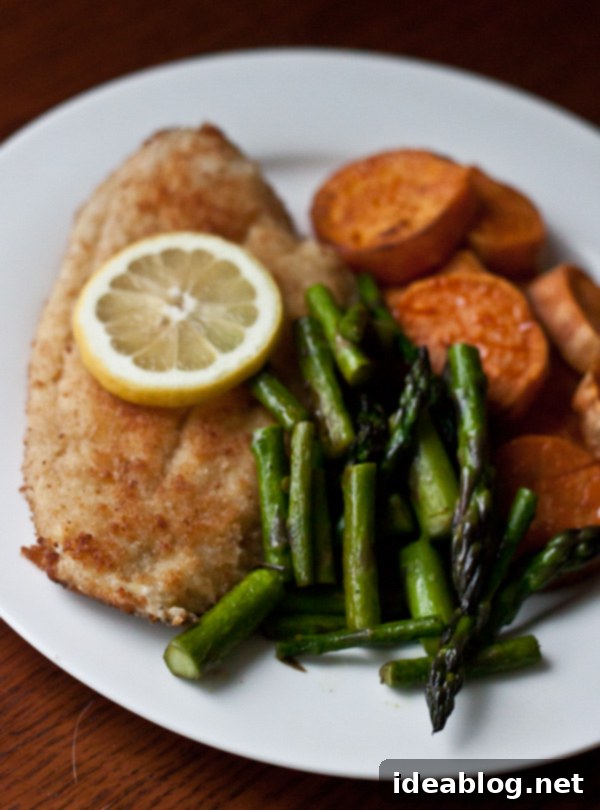Mastering Flounder: Your Comprehensive Guide to Filleting, Pan-Frying, and Enjoying This Versatile Flat Fish
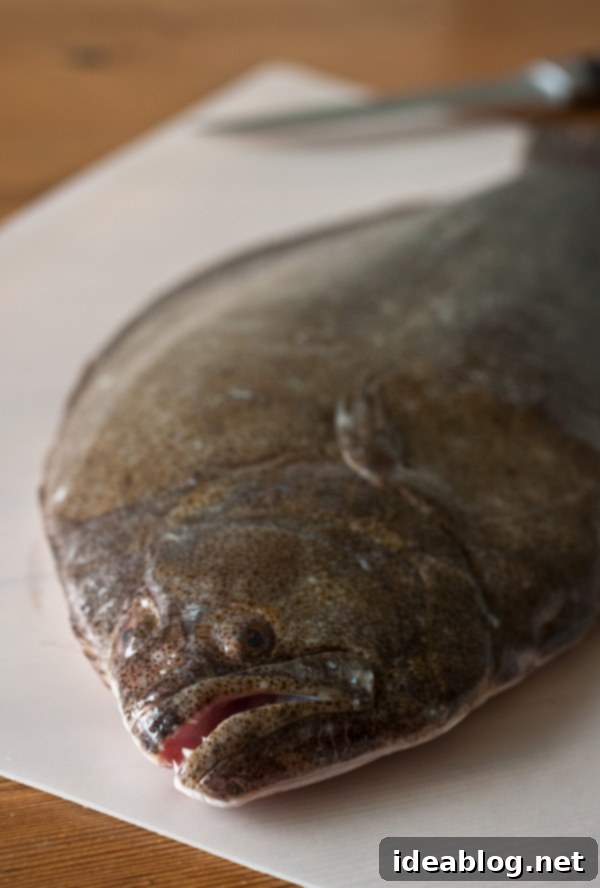
The sight of a whole, fresh flounder at the market is often enough to instantly transport one to sun-drenched coastal memories. Don’t let the sharp teeth of a whole fish deter you; they are, in fact, quite harmless and a sign of its natural state. After encountering such beautiful, fresh whole fish, I simply couldn’t resist bringing one home. The delicate flavor and texture of fresh flounder instantly evoke the essence of summer, making it a perfect choice for light and satisfying meals.
For me, the connection to flounder runs deep, stemming from cherished childhood summers spent visiting my grandmother. Nearly every year, our family would journey across the Channel to England, to the quaint and picturesque fishing village of St. Mawes, Cornwall. We often stayed for weeks at a time, immersing ourselves in the serene beauty and culinary delights of the region. This charming town boasts a small, mobile fish truck where local fishermen proudly sell their daily catch – a bounty of fresh crab, mackerel, various shellfish, and, to my family’s particular delight, an abundance of fresh flounder. These trips were more than just vacations; they were an integral part of my culinary upbringing, shaping my appreciation for fresh, local ingredients and simple, delicious preparations.
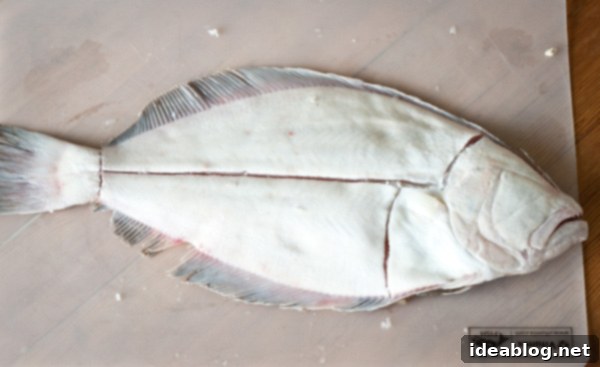
My grandmother, a masterful yet understated cook, always prepared flounder in what became our absolute favorite way: lightly breaded and pan-fried to golden perfection. She served it with generous quantities of fresh lemon wedges, whose bright acidity cut through the richness of the fish, alongside tender runner beans freshly picked from her garden and, without fail, some form of perfectly cooked potatoes. Whether roasted, boiled, or mashed, the potatoes were an essential accompaniment. Despite my grandmother’s exceedingly generous portions – if you know what I mean, her cooking always left you feeling loved and thoroughly nourished – there somehow never seemed to be enough of that exquisite fish to satisfy our eager appetites. The memory of those meals, filled with laughter and the simple pleasure of fresh seafood, remains incredibly vivid.
Flounder stands out as an exceptionally versatile fish, offering a blank canvas for a wide array of culinary techniques. Its delicate, flaky white flesh adapts beautifully to many preparations. It can be elegantly rolled or stuffed with complementary fillings, gently poached to maintain its tenderness, robustly broiled for a crisper finish, or, as is my personal preference, expertly pan-fried. While each method has its merits, pan-frying remains my go-to choice. This technique delivers an irresistible combination of a crisp, golden-brown crust and a moist, flavorful interior, adding a textural dimension that elevates the overall eating experience. The subtle sweetness of the flounder truly shines through with this simple yet effective approach.
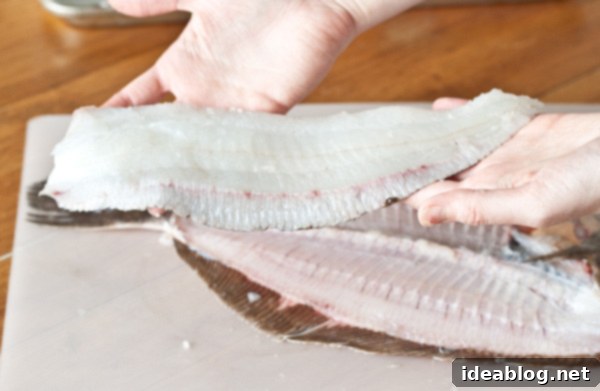
If you’re fortunate enough to discover whole flounder at your local fishmonger or market, I wholeheartedly encourage you to try your hand at breaking it down yourself. The benefits extend far beyond the immediate satisfaction of a DIY project. Not only will you realize significant savings per pound compared to purchasing pre-filleted fish – a valuable economic advantage – but you’ll also gain the incredibly rewarding experience of connecting more deeply with your food. Furthermore, the bones and trimmings from a whole fish are a valuable resource; they can be saved and simmered to create a rich, flavorful fish stock, adding another layer of culinary depth to your cooking and minimizing waste. This comprehensive approach to preparing whole fish is both incredibly gratifying and surprisingly enjoyable.
For those new to the art of fish butchery, flat fish like flounder are an excellent starting point. They are significantly easier to break down into fillets compared to round fish, making them an ideal choice for beginners to practice their knife skills. The relatively flat structure and distinct bone pattern simplify the filleting process, allowing you to learn the fundamental techniques with greater ease and confidence. This accessibility makes tackling a whole flounder a perfect introduction to home fish preparation, building your skills without the intimidation often associated with more complex seafood.
I distinctly recall the first time I successfully filleted a fish in culinary school; it was undoubtedly one of my proudest moments. This seemingly small accomplishment opened up a world of culinary possibilities and, as perhaps silly as this sounds, felt profoundly liberating. It transformed my understanding of fish preparation and cooking, making it feel more accessible and less daunting. The perceived difficulty of filleting quickly faded, replaced by the realization that it’s a skill well within reach, and nowhere near as challenging as it initially appears. With the right tools and a little practice, anyone can master this rewarding technique.
Step-by-Step Guide to Filleting a Flat Fish
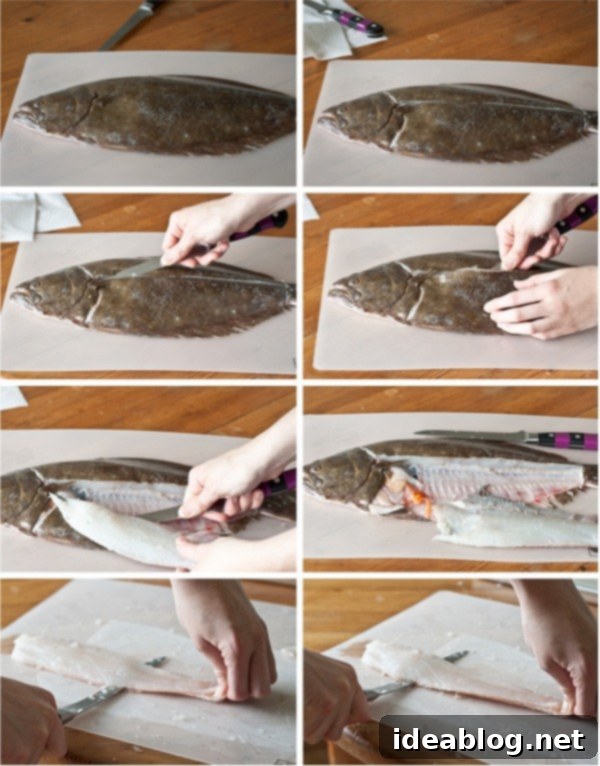
To embark on your filleting journey, you’ll need two essential tools: a large, sturdy cutting board that provides ample workspace and a sharp, flexible boning knife. The flexibility of the blade is crucial for navigating the contours of the fish bones, ensuring you maximize your yield and achieve clean fillets. Lay the fish flat out in front of you. For right-handed individuals, position the head on your left-hand side, as clearly illustrated in the image above. This orientation provides the most natural and efficient angle for your knife work. Begin by making a semicircular cut around the head, just behind the gills, extending down along the backbone. This initial incision creates a starting point and a clear guideline for separating the flesh.
Next, using your sharp boning knife, carefully cut between the flesh and the rib bones. The key here is to keep the knife blade as flat as possible against the bones. This technique ensures that you remove as much precious flesh as possible, minimizing waste. Employ long, smooth strokes, guiding the knife along the bone structure. To enhance visibility and control, use your other hand to gently lift and hold back the fillet as you cut. This allows you to better see the separation point between the flesh and the bone, making the process much smoother and more precise. Work methodically from the backbone outwards, gradually freeing the fillet from the skeletal structure.
Once the first fillet is completely removed, carefully trim any ragged edges or stray bones as needed, ensuring a clean and presentable portion. Set this pristine fillet aside on a lined baking sheet to keep it fresh. Now, rotate the fish and repeat this process for the remaining three fillets. A flat fish, such as flounder, yields four distinct fillets – two from the top side and two from the bottom side, each side separated by the central backbone. With practice, you’ll find a rhythm and efficiency in this process.
After all four fillets have been expertly removed from the frame, it’s time to tackle the skin. While some prefer to cook fish with the skin on for added flavor and crispiness, removing it allows for a more delicate presentation and texture, especially for pan-frying. To remove the skin, lay a fillet skin-side down on your cutting board. Make a small incision at the tail end, just through the skin, and grip the skin firmly with your non-dominant hand. With your boning knife held at a slight angle, almost parallel to the board, use a gentle sawing motion to separate the flesh from the skin. Keep your knife blade as close to the skin as possible to avoid losing any of the valuable meat. This video provides an excellent visual demonstration of this technique, which can be incredibly helpful for beginners.
Once you have meticulously completed these steps, you will be left with four beautiful, pristine flounder fillets. Voila! See? Wasn’t that fun and incredibly satisfying? You’ve not only prepared fresh fish but also acquired a valuable culinary skill that will serve you well in future kitchen endeavors. The fish frame and bones, which you thoughtfully saved, can now be simmered with aromatic vegetables to create a flavorful fish stock, adding incredible depth to soups, sauces, and risottos, truly embodying the nose-to-tail philosophy in seafood preparation.
Enjoying Your Freshly Filleted Flounder
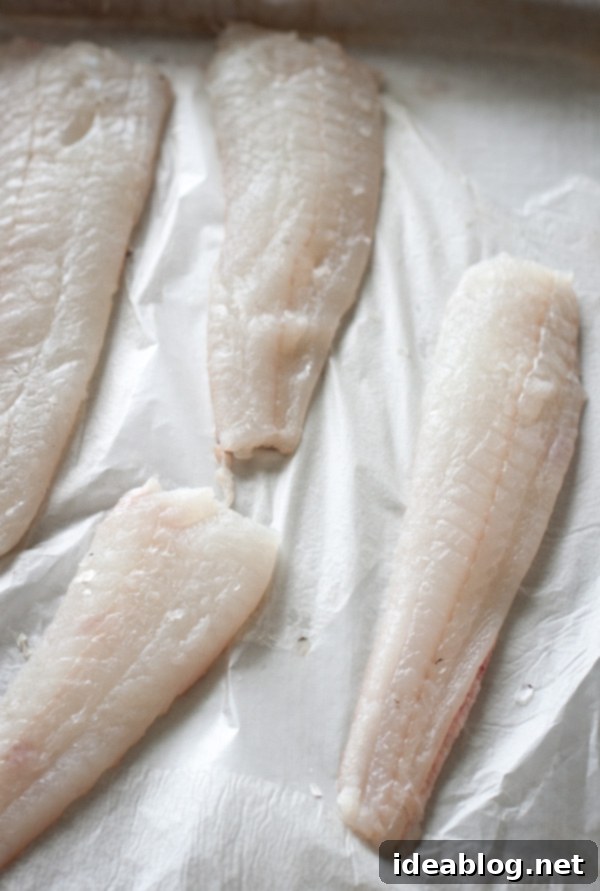
Having successfully filleted the flounder, I chose to prepare these magnificent fillets in my favorite, time-honored way: breaded and pan-fried to a golden crispness. The simple act of lightly coating the fish in seasoned breadcrumbs before frying creates an exquisite crust that perfectly complements the tender, flaky interior. I paired this delightful main course with roasted sweet potatoes, offering a wonderful balance of sweetness and texture, and lightly sautéed asparagus, fresh from the farmer’s market, which provided a vibrant green crunch. This combination created a meal that was both comforting and elegant, truly celebrating the freshness of the ingredients.
However, the beauty of fresh flounder fillets lies in their adaptability. You can easily customize the flavors to suit your palate. Consider adding a medley of fresh chopped herbs such as dill, parsley, or chives to your breading or directly to the fish. A sprinkle of your favorite spices – perhaps smoked paprika, garlic powder, or a touch of cayenne for a subtle kick – can elevate the taste profile significantly. Experiment with different seasonings, marinades, or rubs to infuse even more flavor. A simple lemon-butter sauce drizzled over the cooked fillets, or a vibrant salsa, can also transform the dish. The possibilities are endless, allowing you to tailor your flounder creation to any occasion or craving. Whether you stick to classic preparations or venture into new flavor territories, cooking your own freshly filleted flounder is an experience that promises both culinary satisfaction and delicious results.
